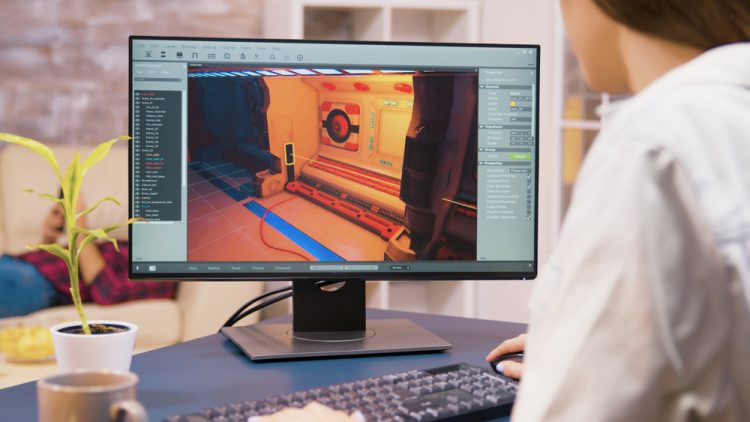3D animation is a complex process that demands more power from your hardware. So, you should know the minimum specs to pack inside your computer before installing 3D animation creation programs. Animation design involves dealing with 2D and 3D imagery, which tests your hardware’s limits.
In this guide, we’ll be talking about the minimum PC specs you’ll need to build a reliable 3D animation desktop.
Before we start, keep one thing in mind you’ll need high-end specs for rendering complex scenes. You can, however, go with a low configuration desktop, but you’ll suffer from slow performance.
Hardware That Affects Your 3D Animation Performance
Here are the PC parts that play a great role in 3D animation rendering:
CPU
When it comes to 3D animation creation, you’ll need a CPU with a faster core rather than too many cores. It’s because the 3D animation tasks are carried out by a single core at a time, and cannot be parallelized, unlike other tasks.
So, the single-core performance of a CPU would be a deciding factor at this point. A CPU or processor that excels in single-core performance usually comes with a higher clock speed (base clock speed).

So, we’ll need a CPU that comes with extremely fast cores. It’s because the tasks that are involved in 3D animation designing are mostly carried out one at a time.
If you are a student of animation designing and looking to build a 3D animation desktop computer, then have to consider this factor the most.
After all, it’s the final rendering that puts squeezes more processing juice out of your CPU. So, you’ll have to look for a faster processor to get things done quickly.
Keep in mind that Objects that are being animated in a 3D animation program are deformed, rigger, and present in hierarchical order (similar to the layers that you see when editing photos in Adobe Photoshop).
Therefore, only a single core has to bear all of this pressure alone without involving the remaining cores.
So, if you’ll just go with the core count, then it wouldn’t give you an edge as most of these cores would be doing nothing.
But rendering all of your layers or images would need you to have more cores. It’s because rendering can be parallelized as the system will split a large rendering task into sub-rendering tasks among all CPU cores.
All in all, you’ll need a CPU with a higher clock speed and enough cores for a smooth animation creation experience. The latest generation of AMD CPUs deliver excellent single as well as multi-core performance.
Graphics Card
Most people think that GPU makes a lot of difference in animation workloads. But that’s wrong, the most influential hardware is the CPU, which we’ve discussed with you above.
However, this doesn’t mean that graphics card has no role to play in delivering you a better 3D animation designing experience.
There are some features like Anti-aliasing, SSOA, Anisotropic filtering, Real-time shadows, etc in Maya Viewport 2.0 and other 3D animation software that give you a free hand to involve your GPU for a better experience.
If you are highly dependent on a realistic Viewport experience, then you’ll need a high-end graphics card. Nvidia’s RTX 3000 Series delivers excellent performance in 3D animation workloads.
However, if you mostly animate in low-quality, then an entry-level GPU like the GTX 1650 would be enough. But if you actively deal with a heavy 3D content creation workload, go for a graphics card like Nvidia RTX 3080 or RTX 3090.
We are not biassed towards Nvidia, but Nvidia chips are highly recommended by professional 3D animation creators due to their low power draw and higher performance as compared to AMD.
Also, many 3D software vendors optimize their engine for Nvidia cards more than AMD. So, Nvidia cards are highly compatible with any 3D animation software that you’ll find on the market.
Last but not least, when dealing with animation workloads, you’ll most likely be working on dual monitors. So if that’s the case, make sure your graphics card comes with multiple display support.
RAM
Having too much RAM won’t be giving you any benefit in animation creation workloads. But less than the recommended amount of RAM would also put a lot of load on your other parts.
There’s a myth that getting a higher clock speed RAM would give you an extra edge in rendering animations, which is totally wrong.
It doesn’t make any sense in investing higher clock speed ram modules, not in the case of animation designing.
The minimum amount of ram to have on a PC meant for animation is 16GB, nothing more or less. The most you should go for is 32GB if you are dealing with projects that involve high-resolution texture, particle caches, etc.
Having more ram would give you extra benefit if you are dealing with multiple applications opened at the same time. Let’s say, you are dealing with Photoshop, and at the same time, you have opened Adobe After Effects, Google Chrome, or Cinema 4D.
Storage Space
This also depends upon your choice. If you render a lot of animation files for your clients, then you’ll need plenty of space on your computer to store those files.
We recommend going with at least 1TB SSD storage space for 3D animation workloads.
You can pick between a hard drive or a solid-state drive for this reason.
Hard drives are slower as compared to SSDs, but are cheaper at the same time. SSDs are faster and a little bit more expensive than traditional hard drives.
Moreover, chances of data loss are slim in SSDs as compared to HDDs.
Conclusion
Hardware requirements vary from software to software, but you can easily run any 3D animation software if you have a powerful CPU. Any 3D animation workbench like Autodesk, Maya, Blender, Adobe Animate, Dragon Frame, etc requires you to have a 64-bit multi-core processor, 1GB GPU, and at least 8GB of RAM.

Hi, this is Masab, the owner and founder of the PC Wire. I’m a PC enthusiast who loves to talk about computers. I have been testing PC hardware for several years now, and I hope my knowledge would answer your queries thoroughly.

